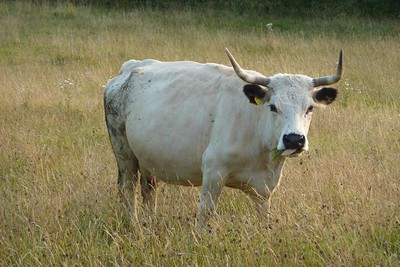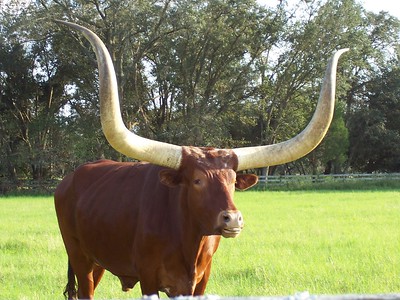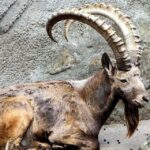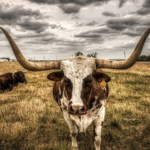Female cows are of tremendous use in the dairy industry and have several distinguishable characteristics. Let’s find out if they have horns.
Female cows are usually born with horns unless they have been bred otherwise. Just like male cows, these horns are magnificent and add to the cow’s overall appearance. However, these horns pose a threat to the safety of cows since they often get entangled in wires or used to hurt other cows.
Key Takeaways:
| Topic | Key Points |
|---|---|
| Female Cows and Horns | – Female cows are usually born with horns, similar to male cows. |
| – Horns add to the cow’s appearance but can pose safety risks to cows and others. | |
| – Dehorning is often performed to reduce risks associated with cow horns. | |
| Types of Female Cows | – All female cows, including dairy and beef cows, have horns unless they are dehorned. |
| – Some cows are born without horns, but dehorning is common for practical and safety reasons. | |
| Horns and Self-Defense | – Horns are used by cows for self-defense against predators in the wild. |
| – Domesticated cows may still exhibit aggressive behavior when threatened, even if dehorned. | |
| Female Cows and Antlers | – Female cows do not have antlers; only male deer typically grow antlers. |
| – Reindeer are an exception among female deer, growing antlers primarily for food defense in cold regions. | |
| Size of Female Cow Horns | – Female cow horns can average between 20 to 26 inches, but size varies by breed and individual. |
| – Some cows have fully developed horns extending up to 100 inches, while others may be born hornless. | |
| Composition of Cow Horns | – Cow horns are made of keratin, not ivory, as commonly believed. |
| – Keratin is also found in cow hooves and is different from the ivory found in elephant tusks. | |
| Horns in Specific Breeds | – Texas Longhorns have horns that can extend up to 4 feet on average. |
| – Highland cows have horns; female horns are longer and thinner than those of males. | |
| – Holsteins, Jersey cows, and Black Angus cows may have horns, but they are often dehorned for safety on farms. | |
| Horns in Oxen | – Female oxen, like other female cows, have horns that may be removed or altered for practical reasons. |
| Regrowth of Horns | – Horns should not regrow if dehorning is performed correctly by professionals. |
| – Improper removal may require a second dehorning process, and proper aftercare is crucial to prevent regrowth. | |
| Benefits of Horns for Cows | – Horns can be used by cows for self-defense against predators and as securing points for ropes used in draught. |
| – Horns are part of cow anatomy and contribute to their majestic appearance. | |
| Benefits of Dehorning | – Dehorning benefits include reduced injury risk to herd mates, space-saving, and reduced aggression in cows. |
| – It also reduces the risk of injury to farmers and makes cows easier to handle, preventing accidents and financial losses. |
To prevent the horns from posing a risk to the cows, dehorning is viewed as the best alternative. Let us look at some commonly asked questions about cows and their horns.

Image Credits: “Cow with horns” by muffinn is licensed under CC BY 2.0
What type of female cow has horns?
Female cows with horns may sound like an unheard-of concept, but they actually exist. Let’s find out more about them.
Female cows, be it dairy or beef cows, have horns unless they have been dehorned. In fact, horns are a genetic characteristic that most horses inherit, regardless of gender. Horns are barely noticeable in female cows since farmers remove them for varying purposes. In general, female horns are smaller than male ones.
It is not easy to tell the difference between a cow and a bull by looking at their horns since most cows are dehorned.
Do all female cows have horns?
A common belief is that most female cows do not have horns. Let’s learn the truth in this regard.
All female cows have horns, particularly dairy cows. You might be confused by the absence of horns in some female cows, but the truth is that they have been dehorned to make it more convenient for the farmers to domesticate them. There are practical reasons behind dehorning, and it is done for the safety of the cows.
The horns on female cows are among their distinct characteristics, along with their udders. That being said, some cows are born without horns.
Are female cows born with horns?
Cows, like most animals, change throughout their lifetime. But are female cows born with horns? Let’s explore more about this.
Female cows, whether they are bred for dairy or beef, are born with horns. Some breeds are bred to be hornless, while in others, horns are burned at a young age due to practical reasons. The horns of cows may get stuck in fences or be used to hit each other, which is why they are removed.
There are other cows that rub their horns against fences or stumps, which naturally blunts them over the years.
Why do female cows have horns?
The anatomy of cows is quite interesting to study. There’s a valid reason why female cows are equipped with horns. Let’s find more about it.
Cows that live in the wild are easy prey. Female cows usually travel with their calves and need something to protect themselves from predators. Horns enable cows to hit their predators, which are mostly carnivorous animals. However, domesticated cows have their horns removed since it can be inconvenient for the farmers.
The self-preservation instincts of cows always kick in even when they are dehorned. As such, you will notice aggressive behavior in cows when they feel threatened.
Do females have antlers?
You might have often seen pictures of deer with antlers. But do female cows have it too? Let’s find out.
Female cows do not have antlers, and neither do male ones. In fact, only male deer have antlers on them. Reindeers are the only species of female deer that grow antlers, and this is primarily used for defending food in cold regions, just like female animals belonging to the bovid family use horns to protect their territories.
A unique aspect about antlers is that, unlike horns, they are shed each year. Usually, this happens in late autumn for males and late spring for females.
Do female cows have long horns?
A common question that has often been asked with regards to cows and horns is how big are the horns of female cows. Let’s find out.
On average, female cow horns can extend anywhere between 20 to 26 inches. However, they are usually smaller due to years of genetic manipulation. Today, several cows are also born hornless. Few breeds of cows and the cows who live in the wild have fully developed horns. In some species, it can extend up to 100 inches.
Horns are a unique characteristic of cows and add to their overall appearance. Like goats, antelopes, etc., cow horns became a defining trait in several horse breeds.
What are cow horns made of?
A common belief is that cow horns are made of ivory. Let’s explore whether there is some truth to this.
Cow horns are made of keratin, not ivory, as some people tend to believe. Even cow hooves are made of keratin. On the other hand, elephant tusks and human teeth are made of ivory or calcium phosphate. When dehorned, cow horns come out hollow.
Do female Longhorns have long horns?
Texas Longhorns are among the most popular cattle breeds. Let’s find out if female Longhorns live up to their name and have longhorns.
The female Texas Longhorns have horns that may extend up to 4 feet on average, just like their male counterparts. However, there is one key difference between their horns. Bull horns are usually straight, whereas female horns are slightly curved and longer. Steers have horns that extend up to 7 feet or 84 inches.
Texas Longhorns are critically endangered cow species, and several steps have been taken to ensure their conservation. These cows are known for providing excellent quality lean beef.

Image Credits: “ANIMALS / LONGHORN STEER” by DiAichner3 is licensed under CC BY 2.0
Do female Highland cows have horns?
Highland cows are a Scottish breed that is characterized by their hairy appearance. Let’s check out if female Highland cows have horns.
Female highland cows have horns, and so do their male counterparts. However, the horns of male and female cows differ. For male Highland cows, the horns are thicker, shorter, and curve towards the tip. However, for female ones, the horns are longer, thinner, and are slightly more curved.
You can tell the difference between male and female Highland cows by looking at their horns. The female cows have a narrower base and a fine tip. It is way thinner than the horns of their male counterparts.

Image Credits: “Male & female Highland Cattle” by rejflinger is licensed under CC BY 2.0
Do female dairy cows have horns?
Dairy cows form an important chunk of the cow population globally. Let’s find out if female dairy cows have horns.
Female dairy cows have horns and are born with them. You might not have spotted dairy cows with horns ever, but that is because their horns are burnt by farmers when they are still young. This prevents them from hitting each other using their horns and also doesn’t let their horns get entangled in fences.
Female dairy cows do not shed or regrow their horns as reindeers do. The dehorning process, if performed correctly, is permanent.
Do female Holstein cows have horns?
Holsteins are an important breed of cow responsible for producing large quantities of milk. Let’s figure out if female Holsteins have horns.
Holsteins have horns, just like any other female cow. However, if you have ever been to a dairy farm, you will notice that Holsteins are hornless. This isn’t a natural phenomenon. Since Holsteins live on a farm with other horses and are frequently handled by farmers who milk them, their horns are removed for safety purposes.
Only a small percentage of female Holsteins are naturally polled. The polled trait is carried by male and female cows, but again, it is not very common.
Do female jersey cows have horns?
Jersey cows are a British breed that has primarily been used as a dairy and draught animal. Let’s find out if they have horns.
All Jersey cows have horns, even the female ones. There are exceptions to this. One, if the animal is crossbred with a polled animal, it might be born without a horn since the polled gene happens to be a dominant one. Second, Jerseys might not have horns if the horns are removed through the process of dehorning.
Although Jersey cattle originate from the British Islands, today, they are found everywhere and are among the most popular dairy cows, right behind Holsteins.
Do Black Angus cows have horns?
Black Angus cows are large animals and are native to Scotland. Let’s find out if Black Angus cows have horns.
Angus cattle do not have horns, but their horns are not removed after birth by farmers. Instead, Angus cows are polled. This means that Angus cattle were bred with polled animals to produce hornless offspring since polled is a dominant gene passed on from one generation to another.
Naturally, Black Angus cows are pretty popular among farmers since they are hornless and do not have to be dehorned by them.
Do female oxen have horns?
Female oxen are useful draught animals but difficult to spot since most cattle belonging to this breed are usually male. Let’s find out if female oxen have horns.
Female oxen, just like any other female cow, have horns. Their horns may be altered due to genetics or if the farmers decide to remove them. However, if you were to look at pictures of oxen, you would notice that most of them have horns. If not dehorned, their horns continue to grow throughout their lifetime.
Oxen are prominent draught animals that have been used since times immemorial to carry goods from one place to another.
Do cow horns grow back?
Cows do not shed their horns as antlers do. But, do horns grow back for dehorned cows? Let’s find out.
Ideally, cow horns should not grow back if the dehorning process is performed by a professional. Sometimes, the horn cells are not properly removed, and in such cases, the cow will need to be dehorned for the second time. The skin around the horn needs to be treated properly after disbudding to prevent regrowth.
As you might know by now, dehorning is done for safety and practical reasons. Therefore, it needs to be done properly to ensure there’s no need for repeating the process.
How do horns benefit cows?
We have highlighted the numerous disadvantages of horns on cows. Now, let’s look at how horns benefit cows.
Horns can be used by cows to protect themselves against predators such as dogs and wolves. It also is the perfect securing point of ropes for draught cows. Horns also have nerve endings and blood cells and form an important part of the cow’s anatomy. All in all, it gives them a majestic appearance and protects them.
That being said, horns are not always a reasonable choice since they can pose a threat to cows. In such cases, dehorning is the only solution.
How does dehorning benefit cows?
Dehorning cows has its own benefits. Let’s look at some of them.
There are several reasons why dehorning has become popular among farmers. Some of them are:
- Dehorning reduces any risk of injury to herd mates.
- Cows require less space if their horns are removed.
- Dehorning reduces the chances of injury or bruising to farmers.
- Cows become less aggressive once dehorned.
- Cows become easier to handle once dehorned.
- Dehorning prevents any accidents on the farm and protects the well-being of farm employees.
- Dehorning prevents potential financial damages as the cow’s horn doesn’t get entangled in fences or wires.
Although dehorning is painful for the calves, it becomes necessary for the safety and well-being of other animals on the farm as well as the farmers themselves.
Conclusion
Most female cows are born with horns unless there is a polled breed involved in the breeding process. Cows born without horns are referred to as polled breeds. Cows have beautiful and massive curved horns, which have several benefits for them, but they are removed for practical reasons and to ensure the safety of the cows.




